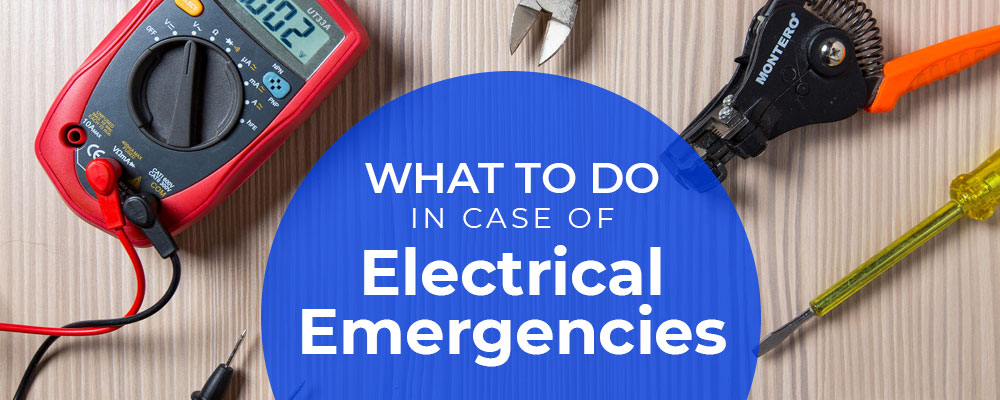There are different types of electrical emergencies and while there are simple cases that are easy to manage, there are also those that will require immediate and professional assistance. Most of the time, they can cause inconveniences and threaten the safety of your family.
In the case of electrical emergencies, it’s important to maintain your presence of mind and take the necessary steps to control the situation well. Here are some of the tips that you should know.
What to do in case of electrical emergencies
Electrical emergencies are generally classified into four categories: power outages, electrical fire, electrical shocks, and fallen power lines. Here’s what you need to do in case you encounter any of those.
Power outages
Such as the most recent power outage in QLD, one of the most common electrical emergencies is a power outage. It refers to power failures or blackouts that happen due to different reasons. Some of the most common causes of power outages include storm, energy shortage, or a downed powerline.
What to do:
1. Turn off the main power source
When turning the power off, it is important to start with the branches first before the main circuit breaker to protect your appliances.
2. Know the cause
While some reasons for outages are beyond your control, there are also instances when it happens because of a tripped circuit breaker. One reason for this is an overloaded outlet. Check outlets and extensions and remove as needed to ensure that the power load will be distributed once the power is back.
3. Seek expert help
If the cause of the power outage remains unclear, contact your energy provider in Australia. Let them know about the problem and seek assistance. A power outage may last for several hours so you may need to check from time to time about what’s being done.
4. Reset carefully
Don’t just turn on your appliances once the power is back. Energy fluctuations occur and these may cause damages to your appliances. To be safe, it is advised to turn on the breaker first.
Electrical shocks
This type of electrical emergency occurs when damages to electrical wires, plugs, and outlets go unnoticed and contact with electricity results in electrocution.
What to do:
1. Turn off the power source
The most important step is to quickly turn off the power. Use an insulated item to cut the connection between the power source and the person to stop electrical shock.
2. Maintain distance
You can also be electrocuted if you touch the person who has experienced an electrical shock. As much as you want to show comfort, you have to maintain a safe distance.
3. Seek medical help
Assess the person who experienced an electrical shock. If there are burns or the patient is not in good condition, you’ll need a professional who can administer prompt medical assistance.
Electrical fires
Electrical fires lead to damage in properties and it often occurs because of overloading, faulty wiring, or negligence.
What to do:
1. Cut the power supply
This is an important protocol to follow. Turn off your circuit breaker to make sure that the power supply is cut at the source. This will help control the fire and prevent electric shocks.
2. Disperse with a fire extinguisher
To put out the fire, you’ll need a fire extinguisher. A water-based (Class A) fire extinguisher may be used if the power supply is already cut. However, when there is live electrical equipment, a Class C fire extinguisher must be used as it is designed to control fire where energised electrical equipment is involved.
3. Call the fire brigade asap
In case of electrical fires, you’ll need the help of the fire brigade even after you manage to put it out. Let them assess the scene to know if there are still hazards that may put you at risk.
4. Evacuate
There are electrical fires that are more difficult to control than others. If this is the case, you have to evacuate the area as soon as possible. If fire or smoke is blocking your way, it is important to stay close to the ground so you can prevent inhalation of smoke.
Fallen power lines
This is a type of electrical emergency that can pose a serious threat to life and property. Extreme caution must be observed when dealing with this problem.
1. Maintain a minimum distance of 40 feet
Take note that a line may still have power in it even if it has no sounds or sparks. To be safe, stay at least 40 feet away from the power line.
2. Beware of conductive materials
As mentioned in the previous item, a fallen power line may still be live. Check for conductors like metals and puddles that pose electrical hazards and avoid any contact with them.
3. Inform the authorities
Authorities should be immediately notified about a fallen power line. Your energy provider who may be in charge of these power lines must also be informed. They are the best persons who know how to handle this type of electrical emergency.
ALSO READ: Understanding Electricity Rates
Electrical emergencies can pose serious problems and may even lead to property damage and even loss of lives. While these are unexpected and can cause real inconveniences, you’ll be in a better situation with the help of reliable electricity providers. In some ways, they can offer the support you need to manage electrical emergencies and the effects that they may bring.
Electricity is a serious matter so if you are in search of electricity providers in NSW, Brisbane, Victoria, and other areas in Australia, Electricity Wizard is here to help you find and compare them. Let us help you compare plans so you can find one of the best energy deals there is. Contact us now.






 Compare Plans Online
Compare Plans Online Residential
Residential

 Business
Business

 Moving House?
Moving House? Helpful Energy Info
Helpful Energy Info 